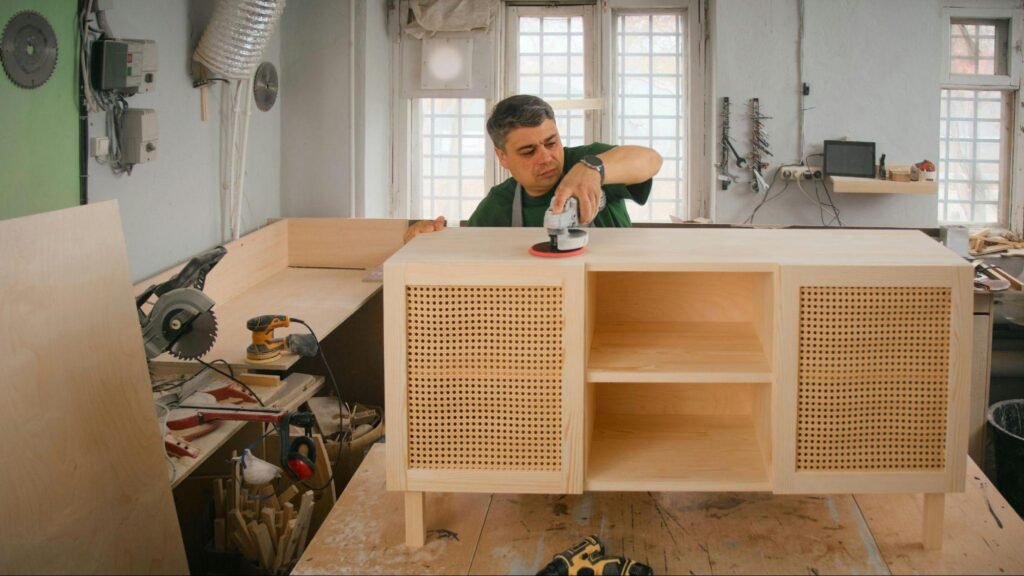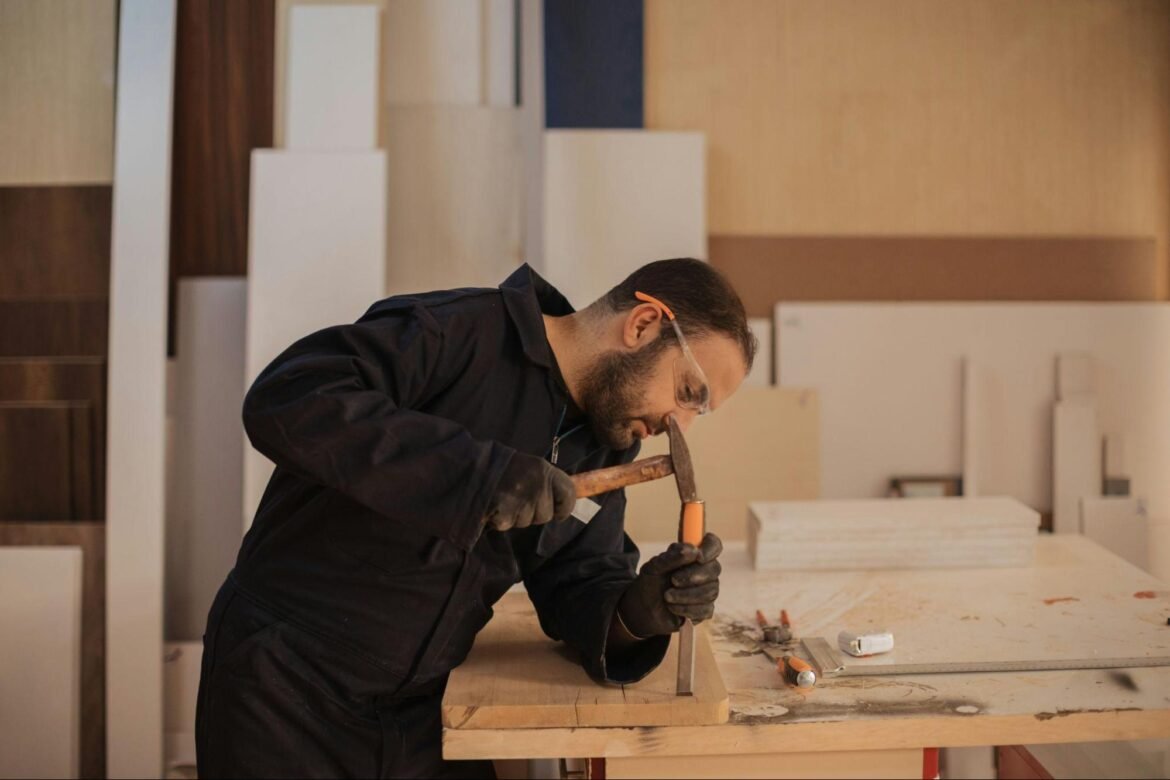In today’s world of fast fixes and mass production, the art of woodworking remains an enduring craft—and a thriving business opportunity. From bespoke furniture and cabinetry to specialty joinery and artisan décor, a well-outfitted woodworking shop can set you up for a rewarding career or a highly profitable side hustle. But with so many tools and machines on the market, how do you build a professional workshop—without emptying your bank account?
The answer lies in smart planning, savvy sourcing, and a commitment to prioritizing quality where it counts. Whether you’re starting in a spare garage or launching a new trade business, setting up shop is more accessible than ever. Comparison resources like https://equipment-outfitters.com/ make it easier to find deals on reliable machinery, helping you stretch your investment without sacrificing professional standards.
Ready to make sawdust and success? Here’s how to set up a professional woodworking shop on a budget—without cutting corners.
1. Define Your Space and Your Specialty
Before you invest a single pound, take a step back and clarify your goals and constraints. Are you planning to build bespoke dining tables, kitchen cabinets, or custom shelving? Do you see yourself running a full-scale operation, or is this a weekend side business? Your ambitions will shape your needs—and your spending.
Key questions to ask:
- How much space do you have? (A single garage, a shed, a rented unit, or more?)
- What’s your primary focus? (Furniture, cabinetry, joinery, craft items?)
- Do you need your space to double as storage or finishing area?
- How much noise, dust, and vibration can your location accommodate?
A clear vision helps you avoid expensive mistakes—like buying a giant panel saw you can’t fit, or overspending on advanced tools you won’t actually use.
2. List the “Must-Have” Tools for Your Work

Image from Unsplash
When it comes to outfitting your workshop, it’s easy to get carried away by the latest gadgets and specialty tools. But every efficient woodworking shop starts with a few versatile, high-quality basics. Prioritize must-haves—tools that deliver the biggest impact for your most common projects.
Essential woodworking machines and tools:
- Table Saw – The workhorse of any shop. Look for a reliable, mid-range model with a sturdy fence, ample power, and a good safety record.
- Miter Saw – Essential for clean, accurate crosscuts and angles in framing or trim work.
- Bandsaw – Ideal for curved cuts and resawing boards.
- Drill Press – For precision drilling and repetitive holes.
- Router and Router Table – Key for joinery, edge profiles, and fine details.
- Planer and Jointer – For prepping rough lumber into smooth, straight boards.
- Dust Collection System – Protects your lungs and keeps your workspace safe and clean.
- Shop Vacuum – A budget-friendly supplement for quick clean-ups.
- Workbenches, Clamps, and Hand Tools – Don’t forget sturdy surfaces, plenty of clamps, chisels, mallets, measuring tools, and marking gauges.
Start small and add as your workload grows. A few well-chosen machines can accomplish 80% of your early projects—and you can always upgrade or expand as you reinvest earnings.
3. Shop Smart: Buy Used, Refurbished, or “Last Year’s Model”
One of the best ways to save money on big-ticket machinery is to buy second-hand. Quality woodworking tools are built to last—and many skilled tradespeople sell or trade up as their businesses expand.
Where to look:
- Online classifieds (Gumtree, Facebook Marketplace, eBay)
- Local auctions or estate sales (especially from retired trades)
- Specialist resellers and trade networks
- Refurbished deals from manufacturers or retailers
- Community “maker spaces” that may upgrade their equipment
Always inspect machines in person if possible, check for missing parts, and test the tool under load. Refurbished equipment from reputable dealers can offer warranties or service plans—worth the peace of mind for a small premium.
Tip: When you need to buy new, look for bundle deals, trade promotions, or discounted “last year’s model” stock.
4. Prioritise Safety from Day One
It’s tempting to focus your budget on tools, but no professional shop is complete—or legal—without robust safety measures. Protecting your health is a long-term investment you’ll never regret.
Safety essentials:
- Dust extraction system: Fine wood dust is a serious respiratory hazard; invest early in a HEPA-filtered collector or shop vac, and always wear a dust mask.
- Blade guards and riving knives: Don’t remove safety features just for convenience—use them every time.
- Hearing and eye protection: Woodworking is noisy and can send chips flying—keep safety glasses and earmuffs handy at every station.
- First aid kit and fire extinguisher: Accidents happen, even to experts. Make sure help is within reach.
- Good lighting and clear walkways: Poor visibility or cluttered spaces cause more accidents than dull blades.
Legal note: For business users, ensure your shop meets HSE requirements and local council guidelines for workplace safety and environmental control.
For more, visit the UK Health and Safety Executive’s woodworking safety page.
5. Build for Flexibility: Mobile Bases, Modular Layouts, and Smart Storage
Professional workshops evolve. As your client list grows or projects change, you’ll need to reconfigure machines and storage. Avoid locking yourself into a rigid layout—plan for mobility and modularity from the start.
Smart setup ideas:
- Mobile bases for large tools: Many machines can be mounted on wheeled bases, letting you reclaim space for assembly or finishing as needed.
- Folding or stackable benches: Great for small spaces; store vertically when not in use.
- Wall-mounted storage: Pegboards, shelves, and tool racks keep hand tools visible and close at hand.
- Material storage: Use horizontal racks for lumber, vertical bins for offcuts, and sealed bins for hardware and fasteners.
A flexible shop lets you take on new types of work, adapt to changing needs, and maximize your investment—without costly renovations.
6. Invest in Quality Where It Counts

Image from Unsplash
Budget setups don’t mean “cheap everything.” For critical tasks—like table saws or jointers—buy the best you can afford. Cheap, underpowered machines will cost you more in frustration, wasted material, and frequent repairs.
Where to splurge:
- Core machines you’ll use daily
- Accurate measuring and marking tools
- Reliable clamps and vices
Where to save:
- Specialty jigs (often DIY-friendly)
- Shop-built benches or tool storage
- Second-hand tools for less-frequent jobs
Think long-term: a quality tool, well-maintained, will pay for itself many times over.
7. Network and Learn from the Pros
Your shop is more than four walls and machines—it’s a launchpad for learning, community, and new business opportunities. Connect with local woodworking guilds, online forums, YouTube creators, and social media groups.
You’ll pick up workflow tips, discover trusted suppliers, and get early word on used equipment or tool swaps.
Bonus: Many makers share plans for DIY shop furniture, storage solutions, or money-saving jigs—helping you upgrade your setup for less.
8. Plan for Growth—But Start Simple
Ambitious projects and advanced machines can wait. For now, focus on learning, building your reputation, and producing quality work with the basics. As your skill and client list expand, you can reinvest in your shop—and perhaps outgrow your first space altogether.
Steps for sustainable growth:
- Keep detailed records of your spending, project costs, and earnings.
- Reinvest profits into tool upgrades or shop improvements.
- Listen to client feedback—let your services shape your next investment.
- Keep your workshop adaptable, clean, and welcoming.
Build Smart, Work Safe, and Grow with Confidence
Setting up a professional woodworking shop on a budget is more than possible—it’s a proven path for thousands of successful craftspeople and businesses across the UK. With a clear plan, smart sourcing, and a commitment to safety and flexibility, you’ll set the stage for years of creative and commercial success. And with online resources like Equipment Outfitters and HSE’s health & safety guidance, you’ll have everything you need to start strong.
Ready to make your mark? Your workshop awaits—and so do your future customers.


